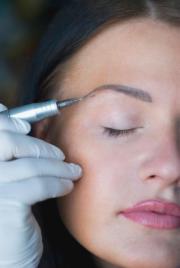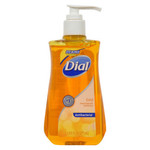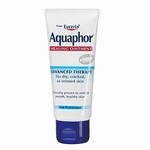Best Tattoo Aftercare Instructions
Proper Aftercare instructions for Arlington Texas serving DFW
Tattoo Aftercare Instructions
PRODUCTS NEEDED:
*DIAL LIQUID ANTIBACTERIAL SOAP
*Aquaphor
*Aveno (Fragrance-Free)lotion
Now, you have your fresh new tattoo, and you want to take good care of it! From this point on, your Tattoo Artist is not responsible
for any infection or problems you may have with your tattoo if you don't take proper care of it. You must follow these guidelines. A really beautiful tattoo can turn into a disaster
if the proper aftercare is not taken.
Leave That Bandage Alone!
Your artist took the care to cover up your new tattoo for a very good reason - to keep air-born bacteria from invading your wound. Yes,
as pretty as your new tattoo is, it is still a wound. Open flesh is a breeding ground for bacteria and infection. Leave the bandage on for a minimum of two hours, but no longer than ten
hours. The excitement of having a new tattoo will make you want to remove the bandage so you can show your friends, but your friends will just have to wait until later. (hope you got
a pic before the bandage was applied to show your friends.)
The only exception to this rule is if your artist covered your tattoo with saran wrap or some kind of plastic. This is extremely detrimental to a tattoo (and is not a proper aftercare ethic), so it should be removed immediately. You're better off not having anything covering than suffocating your new tattoo with plastic wrap
How to Wash and Treat Your Tattoo
Wash the tattoo twice a day for the next 3 to 4 weeks once in the morning and once at
night until full head. Wash your hands thoroughly with
*DIAL LIQUID ANTIBACTERIAL SOAP before each wash of the tattoo. Get your sink
water to as hot as you can stand to the Tattoo without burning yourself. After you
remove the bandage, you will want to wash your tattoo. Taking half a pump of*DIAL
LIQUID ANTIBACTERIAL SOAP lather it up in your hands (make it bubbly) only using
the tips of your fingers you will want to gently wash away any ointment, blood, and/or
plasma and to completely clean the area. Do not use a washcloth or anything abrasive
when washing the Tattoo. Your hand is your best tool in this case. (If your tattoo feels
slimy and slippery, you have probably been oozing plasma. Try to gently remove it as
much of this as possible - when the plasma dries on the skin surface, it creates scabs.)
Once washed and rinsed. Then pat/press (do not rub) the area firmly with a CLEAN
paper towel NOT A CLOTH TOWEL (cloth towels tend to leave cloth fibers in the tattoo
causing the cloth to retain ink causing fading in the tattoo) to get it completely dry and
free of all moisture (for bacteria can spawn in moisture and be prone to infection).
Now once fully dry I recommend *Aquaphor for the 1st seven to ten days after every wash ( really unto where the tightness and soreness in the tattoo are gone you will use
the *Aquaphor ) you will apply one pea-size drop for every 3 to 4 square inches. After
applying the *Aquaphor grab a few more paper towels and same method use to remove
moisture will be used to remove excess *Aquaphor. So then pat/press (do not rub) the
area firmly with a CLEAN paper towel (NOT A CLOTH TOWEL) do this till the *Aquaphor
is a thin film over the tattoo (slightly visible). After the tightness and soreness is gone
from the tattoo, you will still wash twice a day for the next 2 weeks or until full heald
but after every wash at this rate, you will start to use the lotion. A lot of artists
recommend Lubriderm, but I have found that Lubriderm stings when I apply it. Instead,
I have had great success *Aveno (Fragrance-Free)lotion. Apply a thin layer of *Aveno
(Fragrance-Free)lotion after every wash at this rate until fully healed.
How to Shower with your Tattoo
!!NO!! baths, only until the tattoo is fully healed. When in the shower save the tattoo for the last thing
to be washed and wash it the same way you would outside of the shower Make sure the
*DIAL LIQUID ANTIBACTERIAL SOAP is with you in the shower and washes the tattoo just
before exiting the shower. (the only reason I state this is your body wash shampoo conditioner all have
Fragrance and leaving this on your tattoo can cause infection). When out of the shower dry the
tattoo with a CLEAN PAPER TOWEL ON YOUR TOWEL (no baths till fully heald bath can
cause the tattoo to soften causing the tattoo to fade). Do not use perfume or cologne on or
around the Tattoo will cause infection.
MY TATTOO ITCHES
If at any time during the healing process of the tattoo, might itch slap, or pat the Tattoo do not itch or rub the tattoo for this will pull the ink out.
THEY DO NOT'S OF YOUR TATTOO
No swimming, NO tanning, NO saltwater, NO chlorine water, or NO lakes until 4 weeks or
fully heald. avoid DIRECT sunlight on the tattoo during the healing process and after healing
the process is complete so the tattoo does not fade if you choose to be in the sun once heald apply the
the strongest form of sunblock to keep from fading.
**Do not use Neosporin. This is a wonderful product for cuts and scrapes, but not for tattoos.**






